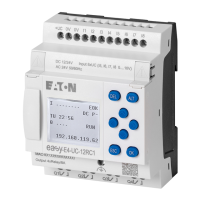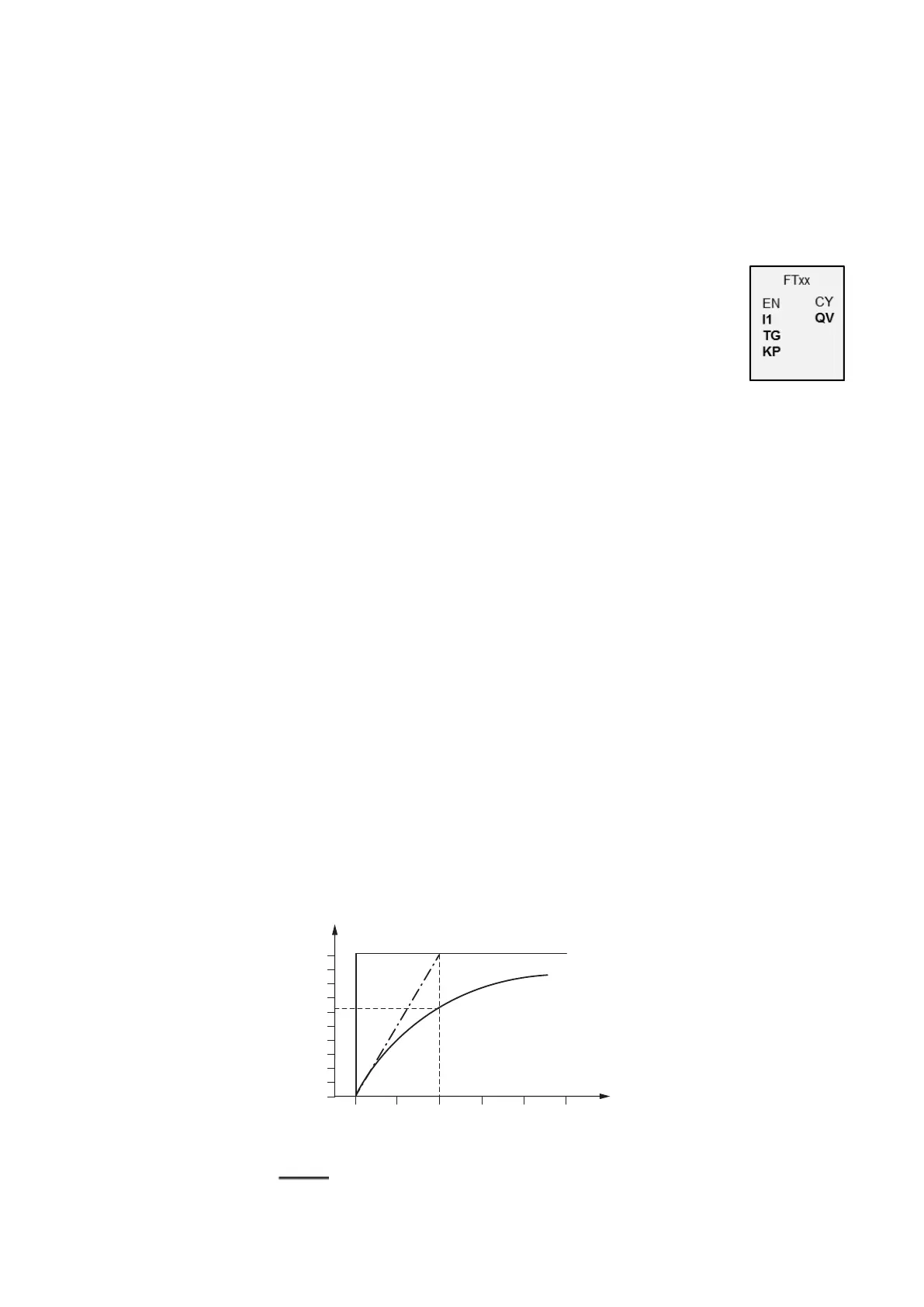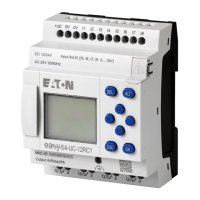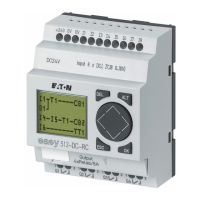6. Function blocks
6.1 Manufacturer function blocks
6.1.4.2 FT - PT1-Signal smoothing filter
General
easyE4 base devices provide 32 PT1 signal smoothing filter function
blocks FT01...FT32.
The function block smoothes noisy signals such as analog input sig-
nals. It operates as a low pass filter.
Operating principle
The signal to be smoothed is added via input I1. The smoothed output value is trans-
ferred to QV.
EN=1 starts the function block. EN=0 initiates a reset in which the output QV is reset
to 0.
You can use the TG input to set the recovery time. This recovery time is the time over
which smoothing will be applied, and it should not be longer than necessary, as sig-
nals will be delayed more than is actually necessary for smoothing. Please note that
delays are an unavoidable side effect of signal smoothing.
The input KP is used to define a proportional gain factor. The input signal I1 is mul-
tiplied with this factor. The value <100> corresponds to a KP of 1.
The PT1 delayed output value is provided at output QV.
If the function block is called for the first time when the device is started or after a
reset, this will result in the delay value being initialized with the input value (the PT1
delay does not start with a value of zero). In other words, the output value at QV will
equal the input value at I1 during the first processing cycle. This will speed up the
PT1 starting behavior.
Step response of the function block
The step response of the FT-PT1 function is an e function. After a time t = Tg the nor-
malized output value is 0.63 QV/QVmax.
QV/QV
max
1.0
0.9
0.8
0.7
0.6
0.5
0.4
0.3
0.2
0.1
0
0
1 20.1
0.63
1.5
2.5
t/T
G
Fig. 194: Response of the FT function block
Output value of the FT-PT1 signal smoothing filter function block, Tangent
easyE402/24 MN050009ENEaton.com
381

